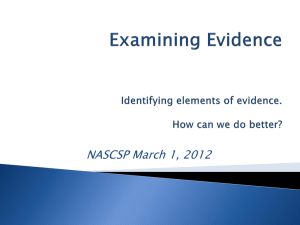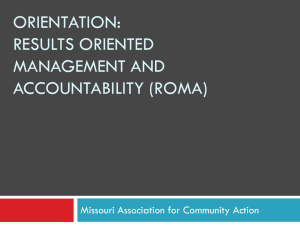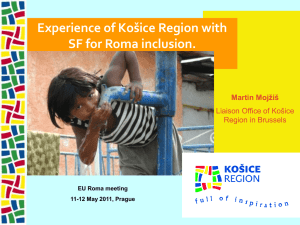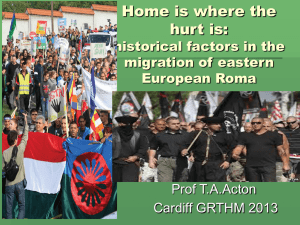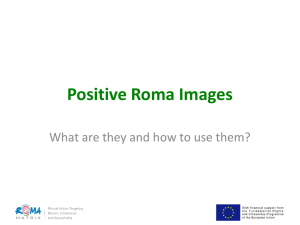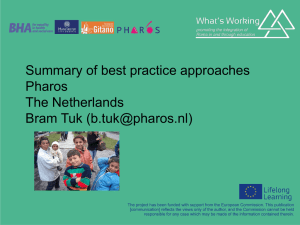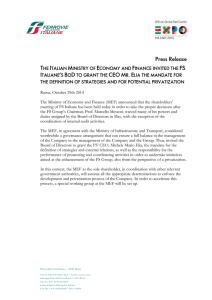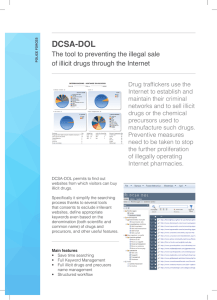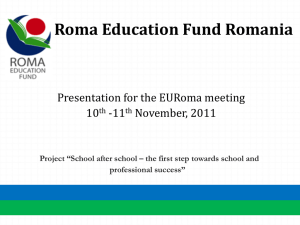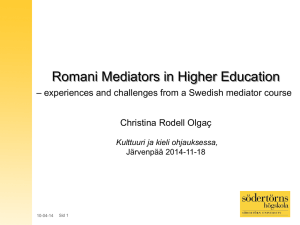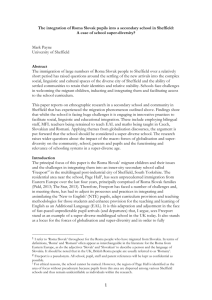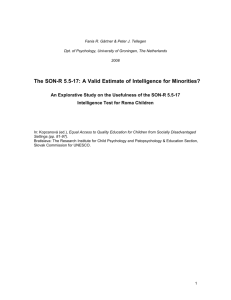Summary of best practice approaches
advertisement
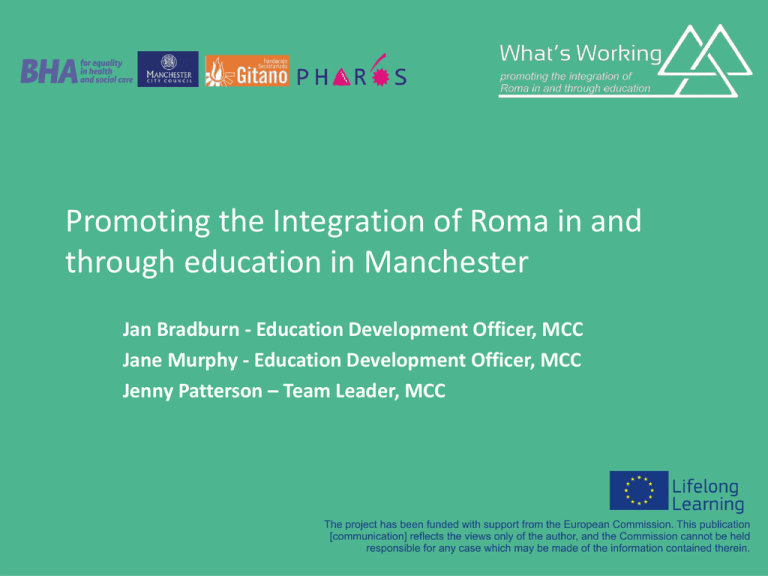
Promoting the Integration of Roma in and through education in Manchester Jan Bradburn - Education Development Officer, MCC Jane Murphy - Education Development Officer, MCC Jenny Patterson – Team Leader, MCC The City of Manchester • MCC central LA within area of Greater Manchester • History of immigration to the city • Diversity – wealth/deprivation/industry/business/arts/universities/media/ sport/new communities • 23% BME population, half of which in 7 wards • 4th highest LA in UK on Index of Multiple Deprivation • Dispersal area for asylum seekers from 1990s • A8 and A2 citizens since expansion of EU • Knowledge, experience and expertise working with diverse communities – schools, LA, universities Manchester Children’s Services & Education • • • • • • • • • 187 languages spoken by children in Manchester’s schools Increasing numbers of BME and EAL pupils, 51% 1,430 International New Arrivals (INAs) 2010/2011 Of 62,500 total pupils, approx 1000 Gypsy Roma Traveller (GRT) at any one time - Irish Travellers who have lived in Manchester for several generations and recently arrived Roma from Europe (who are moving into most deprived areas of the city) Dispersal area for asylum seekers from 1990s A8 and A2 citizens since expansion of EU Gaps in attainment, attendance, drop-out and exclusions between 29 different categories of ethnic groups Concerns about GRT pupils – no take-up of Early Years provision and very few pupils gained expected level by end of high school Knowledge, experience and expertise working with diverse communities – schools, LA, universities New Roma Communities • Some arrived in Manchester as asylum seekers in the 1990s, but most had to return to Europe in or before 2004 • Biggest community from Romania, but also some from Czech Republic and other Eastern European countries including Slovakia, Latvia & Lithuania, • Started to return as EU citizens after Spring 2008 • High numbers (mainly from Romania) living in one area – availability of cheap private housing and increasing numbers (mainly from other EU countries) in other areas of the city • Approx 500 Roma school-age children at any one time, awaiting places or in 37 schools across the city • Two schools have each taken in well over 100 Romania Roma pupils in the last 2 years • Mobility of the community is a problem for schools and other services The Roma Strategy • Leadership • Promoting positive working relationships between different agencies • Link from operational to strategic • Partner in new 4 year EU Project led by University of Manchester • Data, monitoring • Led through Single Regeneration Framework Area (SRF) • Now focus on mainstreaming strategies, rather than separate funding/teams Support for Schools & Children’s Centres • BHA commissioned for outreach to families and communities and work with children missing education • Service User Voice • Learning Networks • Resource development • Training & support for Roma community members to develop their skills as bilingual assistants and with home school liaison • Teaching Assistant support for children vulnerable on Induction/Transition to new schools • Enrichment Activities and early years outreach Service User Voice Pupil/ service user voice is embedded into the Manchester approach Service User Voice School Learning Networks Approach Nobody had the answer Reflective Practice using DCSF constructive conditions AIMS Develop knowledge Respect Raise awareness Promote confidence in trialling new strategies/approaches and taking risks Encourage debate Keep updated Safety High and Expectations Trust Flexibility Access Flexibility and Partnerships Inclusion School Learning Networks Impact • All schools now have a confident specialist • All schools are using a range of strategies to settle children and engage parents • Many teachers have been empowered to use effective classroom strategies • Some schools have well developed writing strategies which take into account Romani learning styles • 77% are on a National Curriculum level after one year (most arrived with no prior schooling) • Over 50% have improved attendance (82% have attendance over 80%) School Improvement Approaches and Activities Leadership and Management -Tracking data for inclusion -Whole school awareness raising/responsibility Teaching and Learning -Classroom strategies identification and sharing -Inspiring and motivating writing -Roma Mentors and including the Romani language in the classroom Engagement of Parents Carers and the Wider Community -Community display -Pro-active approach to engagement -Including in displays and resource development Roma Mentors Developing a ‘job description’ • Support pupils to engage/stay on task • Support pupils to understand the rules and routines/ expectation of school. • Support staff to understand how the pupil is responding and what flexible approaches could be used. • Support school and parents to communicate effectively and understand expectations. • Support school staff to build better relationships and more confidence when speaking to Roma parents. This has enabled staff to home visit and communicate simple messages over the phone. • Support schools and other professionals to understand the Roma community and develop appropriate provision and effective resources. • Act as a role model for children, community and school. Roma Mentors Support and learning • • • • • • • Ensure schools have realistic expectations Ensure schools work with strengths Continuous coaching / development of role and skills Continuous reflection/mutual understanding Clear timetabling and directions Support with reports and reading (flexibility of systems) Share information and ideas/making the most of all types of opportunities to develop skills of all partners and improve practice Roma Mentor Impact Role models for aspirations and behaviour Engaging with parents Understanding past experiences and strengths “Leo has had a very positive impact “B”. He gets a bit silly in some of his lessons. Leo just walks into the room and his behaviour changes. I think “B” sees him as related to home so he has been a good bridge between home and school and supported trust.” Linda Jane Goldring, Head of Sixth Form The Manchester Academy “It has been good for teachers to see how he interacts with the children to allow reflection on strategies.” Hannah Roberts, Ethnic Minority Achievement Co-ordinator at Crowcroft Park Primary School Roma Mentor Impact Engaging with parents “Vasilie’s support has been invaluable. He has supported the children and their mother to understand what goes on in school and that everything we do is in the best interest of the children. Without him we could not have build such a strong partnership between home and school.” Christine Porter, Deputy Head Teacher of Lancasterian Special School Being a female role model Engagement of Roma Families with Early Years Education • Aims • Opportunity to access early years provision • Finding and identifying GRT families (particularly teenage girls) • Knowing the families • Developing Outreach • Developing Transition to Children’s Centres/school • LA data and ascription Engagement of Roma Families with Early Years Education • New ways of analysing services to ensure they do not exclude or prevent engagement • Joint working has helped us to reflect on what has worked well and focus on how - Advantages of Working Together • What have we learnt so far? • This is new, this is big, this is complex, this is a real learning curve • To deal with challenges • Joint working will help the consultation process to find out what the families want – not what we think they need Engagement of Roma Families with Engaging with early years education Early Years Education Engagement of Roma Families with Engaging with early years education Early Years Education
